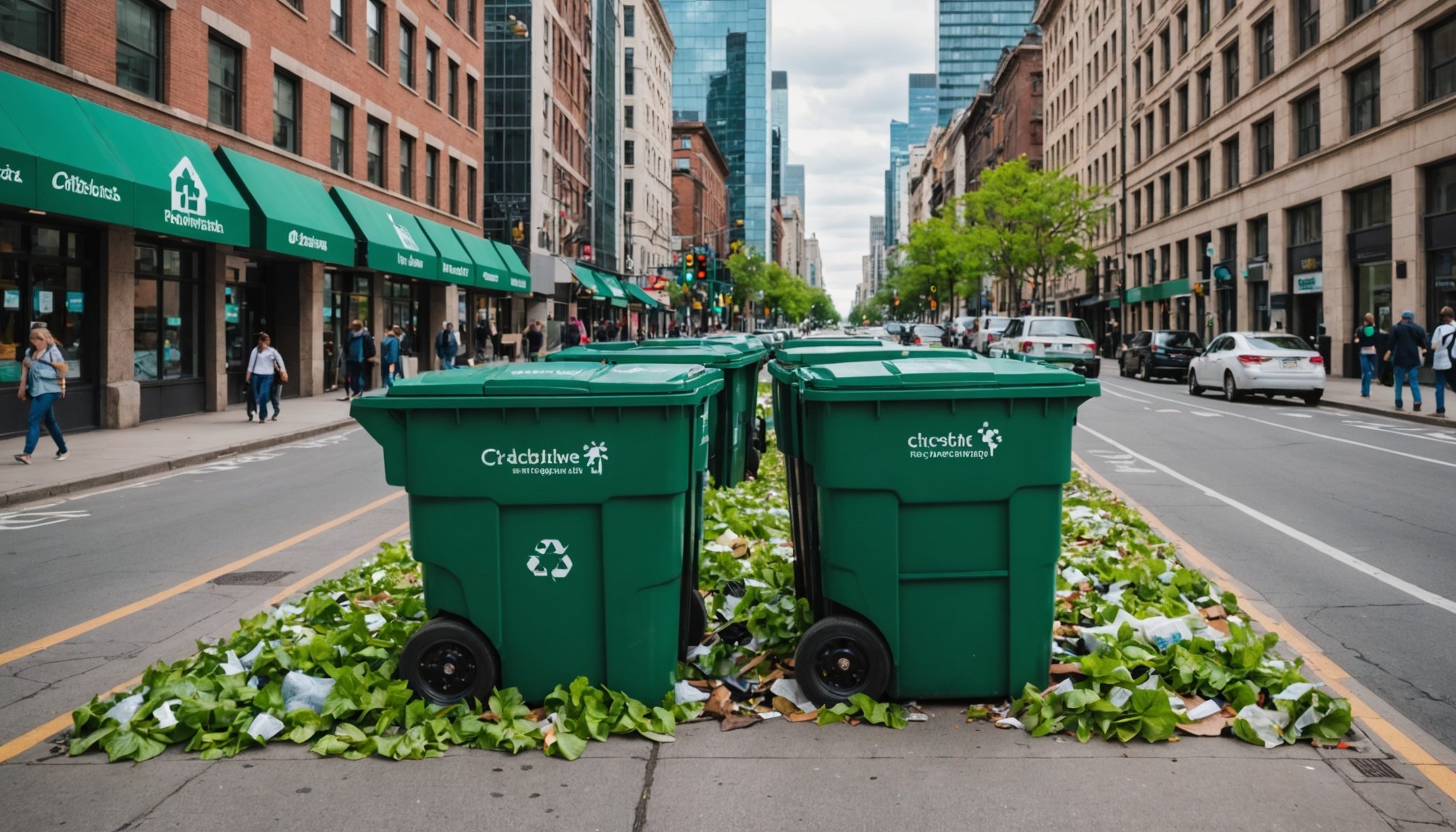Overview of IoT in Waste Management
The Internet of Things (IoT) is revolutionising various sectors, and waste management is one of them. IoT in waste management integrates smart technologies to enhance urban efficiency, offering innovative solutions for managing waste.
What is IoT in Waste Management?
IoT in waste management employs an interconnected network of smart waste solutions that collect and analyse data. Devices such as sensors transmit information about waste levels, bin occupancy, and collection routes. This allows managers to optimise services, reduce costs, and improve service quality.
In the same genre : Transforming customer support with ai: unveiling the latest trends and innovations
Significance of Smart Technology
Using smart technology in waste management is crucial for achieving urban efficiency. It enables real-time monitoring and dynamic scheduling, ensuring quicker waste collection and reducing overflowing bins. Smart systems contribute significantly to sustainable urban living by efficiently allocating resources and minimising environmental impact.
Common IoT Technologies
In waste management, common IoT technologies include smart bins with sensors and waste level detectors. These components, along with connectivity solutions, form a cohesive system that feeds into centralised data hubs. Urban efficiency is further enhanced by using these technologies, enabling predictive analytics and informed decision-making.
Topic to read : Transforming surgery: how augmented reality revolutionizes precision in complex procedures
By adopting these technologies, cities can elevate their waste management systems and develop more efficient urban frameworks.
Key Technologies in IoT Waste Management
As cities embrace IoT waste management, the integration of IoT sensors, data analytics, and tracking technology plays a crucial role.
Role of Sensors in Waste Management
IoT sensors are foundational elements in waste management systems, providing continuous data on waste levels, bin capacity, and even environmental conditions. These sensors enable efficient monitoring by detecting when bins reach full capacity, triggering timely waste collection and preventing overflow.
Data Analytics for Improved Decision Making
Data analytics transforms raw sensor data into actionable insights, greatly enhancing management decisions. By employing sophisticated algorithms to analyse patterns, cities can foresee potential waste challenges and proactively address them. This predictive capability ensures efficient allocation of resources, ultimately optimising urban waste processes.
Waste Tracking Technologies and Their Impact
The implementation of waste tracking technology further enhances operational performance. Trackers allow for real-time route monitoring and adjustment, reducing fuel consumption and collection time. These technologies ensure that waste collection is as efficient as possible, directly contributing to the overarching goal of urban efficiency. Moreover, waste progress can be followed from generation to final disposal, ensuring compliance with environmental policies.
Real-World Applications and Case Studies
IoT success stories in urban waste management demonstrate the transformative potential of smart technologies. Many cities now leverage innovative applications to enhance waste management systems, with varying degrees of success. For instance, in Barcelona, an integrated network of smart waste solutions monitors bin levels and optimises collection routes, reducing operational costs by up to 20%. This approach has significantly increased urban efficiency, ensuring cleaner streets and timely waste collection.
Similarly, Seoul has implemented IoT-driven waste management solutions that not only track waste levels but also adjust collection schedules dynamically. This has led to a marked improvement in resource allocation and time savings, proving the effectiveness of real-time data analysis.
In terms of lessons learned, many case studies point to the importance of scalability and adaptability. While IoT solutions initially require significant investment and infrastructure development, the long-term benefits in waste management efficiency and sustainability are undeniable. By examining these IoT success stories, cities can better navigate challenges and tailor their own urban waste management solutions for improved outcomes, thus paving the way for future enhancements.
Benefits of IoT in Urban Waste Management
IoT in waste management brings significant improvements in waste management efficiency, yielding benefits across various facets. Automating waste collection processes ensures better resource distribution, with smart bins signalling when they are full, which optimises collection routes and schedules.
Cities leveraging IoT experience noteworthy cost reduction. By reducing unnecessary pickups and streamlining operations, financial resources are better managed. This smart approach not only cuts down on fuel consumption but also extends the lifespan of infrastructure, lowering maintenance costs over time.
Adopting IoT in waste management contributes substantially to sustainable practices. Enhanced monitoring and predictive analytics enable cities to manage waste more sustainably, working towards environmental goals by minimising landfill usage and improving recycling rates. The systems foster a circular economy where resources are reused more efficiently.
The transition to IoT-driven solutions represents a meaningful step towards achieving comprehensive urban efficiency. By integrating technology with traditional waste management systems, cities are better equipped to address environmental concerns, balance financial expenditures, and meet the growing demand for eco-friendly solutions. The combination of technology and conventional methods marks a transformative shift towards more sustainable urban environments.
Challenges and Considerations in IoT Adoption
The adoption of IoT in waste management is not without its challenges. Several implementation barriers need to be addressed for the successful deployment of these smart technologies.
Technological Limitations
One of the primary IoT challenges is the dependency on robust and reliable connectivity. Infrastructural limitations, such as poor network coverage and insufficient data bandwidth, can hinder real-time data transmission and system responsiveness. Additionally, the integration of various IoT technologies requires sophisticated interoperability and standardisation protocols. Without these, achieving seamless communication between devices can be complicated.
Financial Constraints
Financing the transition to IoT-driven systems represents a significant hurdle for many municipalities. The initial investment in technology infrastructure, alongside ongoing maintenance costs, can strain budgets. Therefore, securing adequate funding or exploring public-private partnerships is crucial to overcoming these financial constraints.
Public Acceptance and Engagement
Public acceptance of IoT technology in waste management is essential for its sustained success. Engaging communities and fostering an understanding of how IoT can improve urban efficiency is paramount. Strategies to enhance public engagement may include transparent communication about the technology’s benefits and involving citizens in participatory planning processes. Addressing privacy concerns through clear data management policies can also build trust.
Future Trends in IoT Waste Management
The future of waste management is set to be transformed by IoT advancements and their integration into smart city initiatives. As cities evolve, emerging technologies will play a crucial role in shaping efficient waste management systems.
One key trend is the embracement of AI and machine learning to enhance predictive capabilities. These technologies can analyse vast amounts of data, predicting waste generation patterns and helping cities plan more accurately. The use of sophisticated algorithms will allow for dynamic adjustments in waste collection, improving urban efficiency while reducing costs.
Smart city initiatives will likely incorporate IoT in innovative ways, including the integration of waste management into broader urban infrastructures. For example, IoT technology could be linked with other smart city elements like traffic systems to optimise waste collection routes further.
Moreover, advancements in sensors and tracking technologies will enable real-time, precision-based waste management. This will lead to even greater efficiency, with systems adapting to the city’s immediate needs. As IoT advancements continue, they promise to refine and elevate urban waste management strategies, contributing significantly to sustainable and smart urban environments. These trends highlight a future in which cities can efficiently manage resources and meet environmental goals.

